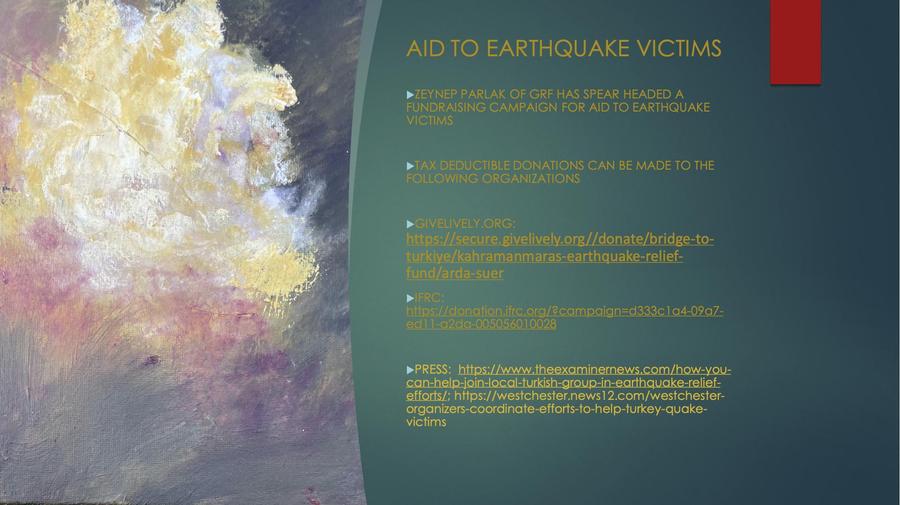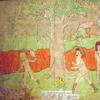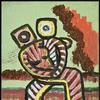Where Earthquakes, the Environment and Art Collide
- NEW YORK, New York
- /
- February 21, 2023

An Interview with Cem Ustuner the owner of Pinelo Art Gallery who is hosting a “Aid to Earthquake Art Show” to raise funds to support the earthquake survivors
1. How have you been impacted by the latest earthquake in Turkiye?
I have lost my whole family in Antakya during the latest earthquake in Turkiye. To ease my own pain and to help earthquake survivors, I have initiated a fundraiser art show titled “Aid to Earthquake” at my Pinelo Art Gallery in Istanbul with donated art work from environmental award winning Artists Fatma Kadir, Selva Ozelli, Gunsu Saracoglu and Ilhan Sayin.

To make the art purchase tax deductible to individual or institutuional buyers, I am cooperating with the International Federation of Red Cross and Red Crescent Societies (IFRC) and Westchester Turkish Moms Group.
Here is a link to the “Aid To Earthquake Art Show”: www.pineloartgallery.com
2. What are the ties between a global warming, earthquakes and the environment?
The most common natural disaster in Turkiye are earthquakes. According to the Turkiye Earthquake Hazard Map, two significant fault lines – the East Anatolian Fault zone and the North Anatolian Fault zone – crisscrosses the country and are gradually squeezing the country westward toward the Mediterranean Sea. All the while three tectonic plates—the Anatolia, Arabia, and Africa plates—touch and interact with each other rendering nearly all of Turkiye highly seismic and vulnerable to earthquakes. Seismologists have used earthquake recording, satellite modeling, and the geology to map where the faults zones are and predict that a big earthquake will occur in Turkiye every 100 or 200 years.
When the magnitude 7.7 earthquake hit at 4:17 am in the morning on February 6th 2023, the Arabian tectonic plate was pushing the Anatolian tectonic plate west while many were sleeping in the town of Pazarcık in Kahramanmaraş, southern Turkiye – as snow quietly fell on the frozen and shaking ground. It was the largest earthquake to hit Turkiye in over 80 years. The first quake was followed by a magnitude 6.7 aftershock 11 minutes later, with another monster temblor measuring 7.5 in magnitude, stricking about nine hours later that devastated Elbistan, a town about 50 miles from the initial quake, sending buildings not built to withstand large earthquakes, weakened by the earlier shocks to total collapse. These earthquakes were shallow (10-17 km below the surface) and had major impacts along a 190 km by 25 km area, an area larger than the European country of Liechtenstein.
There is actually some evidence which supports the idea that global warming can affect seismic activity under the Earth's surface. The last eight years (2015-2022) were the hottest on record according to Scientists at NOAA's National Centers for Environmental Information (NCEI), NASA scientists and the European Commission's Copernicus. Intense global warming can accelerate the melting of glaciers which can change the distribution of weight across the Earth's crust, and result in "glacial isostatic adjustment" by driving changes in plate tectonics putting stress on fault lines which result in earthquakes.
The earthquake devastated the environment based on physical factors such as the shaking, soil liquefaction, landslides, fissures, deep chasms, fires, massive coastal tides and tsunami warnings because of the high magnitude, intensity, duration of the earthquakes with thousands of powerful aftershocks.
However, the environmental damage from the earthquake was magnified by human factors because the newest apartment blocks were built with substandard building materials that crumbled to dust with people trapped under the rubble in highly populated areas. This exposed the fragility of urban infrastructures in at least ten large cities in Turkiye and the gas transmission lines in the Hatay province, that were hampered by construction that wasn’t earthquake safe because of chronic corruption and weak implementation of the building codes.
The final death tolls form this massive earthquake impacting an area in Turkiye that hosts the largest number of Syrian refugees worldwide is likely to place it among the worst natural disasters that have been witnessed in the world. Currently millions of earthquake survivors depend on humanitarian assistance and are already facing a harsh winter weather, spreading disease, and a continuously shaking ground with high magnitude new earthquakes and new aftershocks day after day polluting the air with dust from collapsing buildings and released underground gases which will likely impact the climate over vast periods of geological time.
3. You represent many prominent environmental Artists, tell us more about your “Aid to Earthquake Art Show” and the participating Artists
With my “Aid for Earthquake Art Show”, I wanted help the earthquake survivors by selling art work to raise funds to support the earthquake survivors in Turkiye and Syria. For my project I asked Artists Fatma Kadir, Selva Ozelli, Gunsu Saracoglu, Ilhan Sayin to donate their art work since their work has been awarded and cataloged by the United Nations. I also collaborated with IFRC and Westchester Turkish Moms Group so that the art purchase was tax deductible to any individual or institutional buyer investing in their art.
The Artists have been creating works to highlight the climate warming issue and its impact on the environment with their art projects and exhibitions, as well as global artistic activism that never stopped even during the COVID-19 pandemic. They exhibited their multiple award winning art shows globally at museums, Culture Ministries, London, New York and Auckland Climate Week events, various United Nations conferences including the UNEP’s 50th Conference and the Conference of the Parties (COP26, 27) where the international negotiating forum of delegates from politics, science, business and NGOs agreed on global measures to address mitigation of climate change. They have been making art history in the environmental art area which for the first time is being studied and cataloged by the world’s oldest largest art university Berlin University of the Arts as part of the project titled “Climate Summit Art. Art and Political Event, 1972 – 2022 https://www.kunstgeschichte.hu-berlin.de/forschung/laufende-forschungsprojekte/klimagipfelkunst/climate-summit-art-art-and-political-event-1972-2022/.” The project examines climate summit art as a corpus, with the objective of deriving specific aspects and developments that are characteristic of the developments in the relationship between art, environment, global warming, politics, society and the economy. At the end of the project, a full list will be published as a catalogue and the Artists work will be included in this catalog.
5. Are you collaborating with any non-for profit organizations in raising funds for the earthquake via your “Aid to Earthquake Art Show” ?
To make the art purchase tax deductible to individual or institutional buyers, I am collaborating with the International Federation of Red Cross and Red Crescent Societies (IFRC) which have identified the climate crisis as one of the greatest humanitarian threats currently facing communities around the world. Artist Selva Ozelli is a member of the Sisli, Istanbul Women’s arm of IFRC which is accepting donations at:
https://donation.ifrc.org/?campaign=d333c1a4-09a7- ed11-a2da-005056010028
I am also collaborating with Zeynep Parlak of the Westchester Turkish Moms Group which is collecting/purchasing desperately needed items for the families who survived the devastating earthquake that is accepting donations at:
Buyers of art must show proof of donation of $100 to either IFRC or Weschester Turkish Moms Group to be able to purchase a print by these Artists for $20. The Artists oil paintings are also for sale under a similar arrangement. Inquiries for oil painting purchases can be directed to info@pineloartgallery.com.
6. Are you aware of other art based fundraisers for the earthquake?
Refik Anadol the father of AI based art who is currently exhibiting his work at the Museum of Modern Art in New York City is raising digital asset funds for the earthquake survivors. You may inquire about these donations at:
https://twitter.com/search?q=refik%20anadol%20earthquake%20&src=typed_query&f=top
7. Anything else you would like to add?
Environmental artists who would like to donate their work to the Aid For Earthquake Art Show should not hesitate to reach out to me.
8. How can people reach you?
I can be reached on my Website, Facebook, and Instagram as well as the following address:
Cem Ustuner, Owner of Pinelo Art Gallery
Pinelo Art Gallery
Address: Ergenekon, 4 2 16, Halaskargazi Cd., 34373 Şişli/İstanbul
Phone: 90 212 249 78 71
WhatsApp: 90 533 470 2865
Email: infor@pineloartgallery.com
Website: www.pineloartgallery.com
Contact:
Selva Ozelli646-864-8825
selva.f.ozelli@gmail.com











![Peter Paul Rubens (Flemish, 1577–1640), After Titian (Tiziano Vecelli) (Italian [Venetian], c. 1488–1576), Rape of Europa, 1628–29. Oil on canvas, 71 7/8 x 79 3/8 in. Peter Paul Rubens (Flemish, 1577–1640), After Titian (Tiziano Vecelli) (Italian [Venetian], c. 1488–1576), Rape of Europa, 1628–29. Oil on canvas, 71 7/8 x 79 3/8 in.](/images/c/e2/2e/Jan20_Rape_of_Europa100x100_c.jpg)




